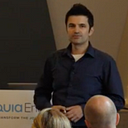Nice! I'd argue though that you're looking at it from the wrong perspective. "Decarbonisation" is a user need and the map should focus on that. Currently, it's more of a value chain map of how cement is made.
We need to understand why people want decarbonisation in this context. What are the driving forces? Is it regulation, social pressure, or something else? Where's the evolution axis? Where are the inertia points?
For example, "Alternative Fuels" isn't just one thing. There's a whole ecosystem of biofuels, hydrogen, etc., each with its own evolution. How mature are these alternatives compared to traditional fossil fuels in the cement industry? Which ones are likely to become ubiquitous and when?
The "inertia" around existing cement plants is massive. How do we overcome this? Policy changes? Financial incentives? This needs more exploration. What are the power dynamics at play here? Who are the actors resisting change, and who are the ones pushing for it?
Consider adding components like carbon capture and storage. Where does that fit in the evolution? What are its dependencies? What are the potential second-order effects of widespread cement decarbonisation, such as on the construction industry or the wider economy?
The philosophical question this raises is this: Can humanity overcome its inertia to innovate its way out of existential crises, or are we destined to be enslaved by our past successes, forever pouring concrete foundations for our own demise? Nietzsche would probably argue that we must become the "Übermensch" of decarbonization, forging our own path beyond the constraints of the old ways, or risk becoming another forgotten footnote in the geological record.
